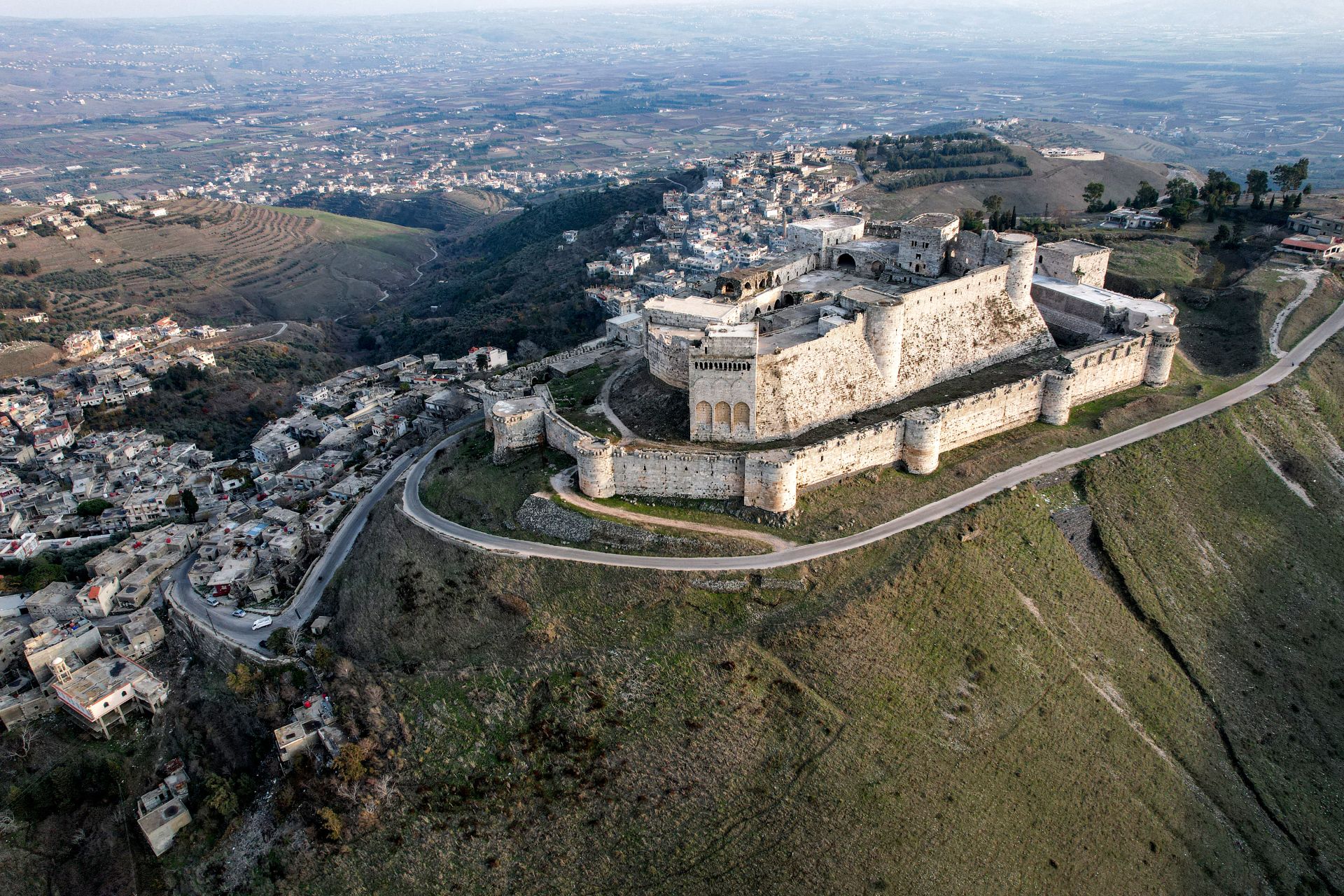- Home
- Arab World
- Valley of Christians: A Cradle of Faith in Syria

This aerial view shows the medieval Crusader fortress of Krak des Chevaliers in the Syrian province of Homs on December 15, 2024. ©Aaref WATAD/AFP
Scarred in September by several wildfires and a growing sense of insecurity, including a motorcycle shooting in early October that left three people dead, the Valley of Christians (Wadi al-Nasara) is now facing mounting threats.
Located between the Mediterranean coast and the city of Homs, this rural region of Syria, known in Arabic as Wadi al-Nasara, falls under the administrative jurisdiction of the Homs Governorate. Nestled between Syrian coastal mountains and Lebanese ranges, the valley is distinguished by its green hills and fertile landscapes.
Predominantly populated by Greek Orthodox Christians, the Valley of Christians is regarded as one of the historic heartlands of Christianity in Syria. Christian presence there dates back to early centuries of faith, when hermits and monks settled in. However, the valley became a major spiritual center of Greek Orthodox monasticism during the Byzantine period.
It was also during this era that the Monastery of Saint George (Deir Mar Jerjes) was founded – one of the region’s most important religious and tourist landmarks – likely under Emperor Justinian’s reign. The monastery remains home to an active monastic community and still preserves a copy of the Pact of Omar, a historic document guaranteeing protection for Christian places of worship.
A few kilometers away stands the renowned Krak des Chevaliers, a fortress built by the Hospitaller Knights in the 11th century. Perched atop a hill, it is considered one of the best-preserved monuments of Crusader architecture. Its strategic location gave it a vital role in the defense of Latin states of the East. The fortress was later expanded and modified, notably under Mamluks and Ottomans. The Krak des Chevaliers is listed as a UNESCO World Heritage Site.
Overlooking the valley from the summit of Mount Sayeh, the monumental statue of Our Lady of the Valley – 30 meters high and inaugurated in 2009 – has become one of the region’s major Christian pilgrimage sites.
The valley was home to around 210,000 Christians in 2016, including several thousand displaced families. The current figure is difficult to determine, as Syrian Christians have been disproportionately affected by emigration due to economic, political and security challenges in a country battered by 13 years of civil war.
The Valley of Christians encompasses about 50 predominantly Christian villages, including Mashta al-Helou, Kafra, Marmarita and Kafroun. Blessed with fertile soil, it is known for its agriculture, especially olives, apples and grapes, and hosts two private universities: Al-Hawash and Wadi International University.
Several notable figures hail from the valley, including John X Yazigi, Greek Orthodox Patriarch of Antioch and All the East, as well as poet and playwright Issa Ayoub.
Read more




Comments